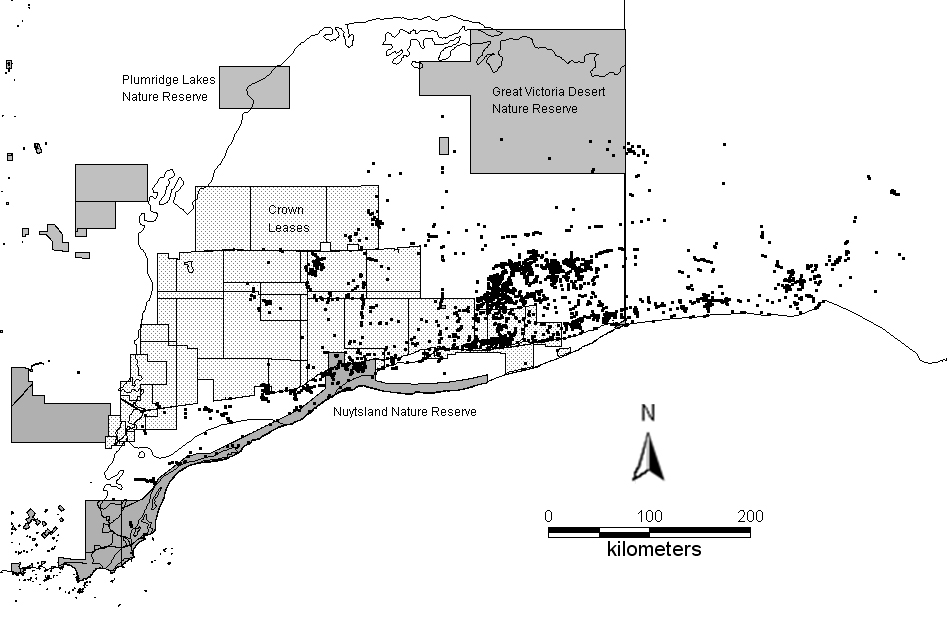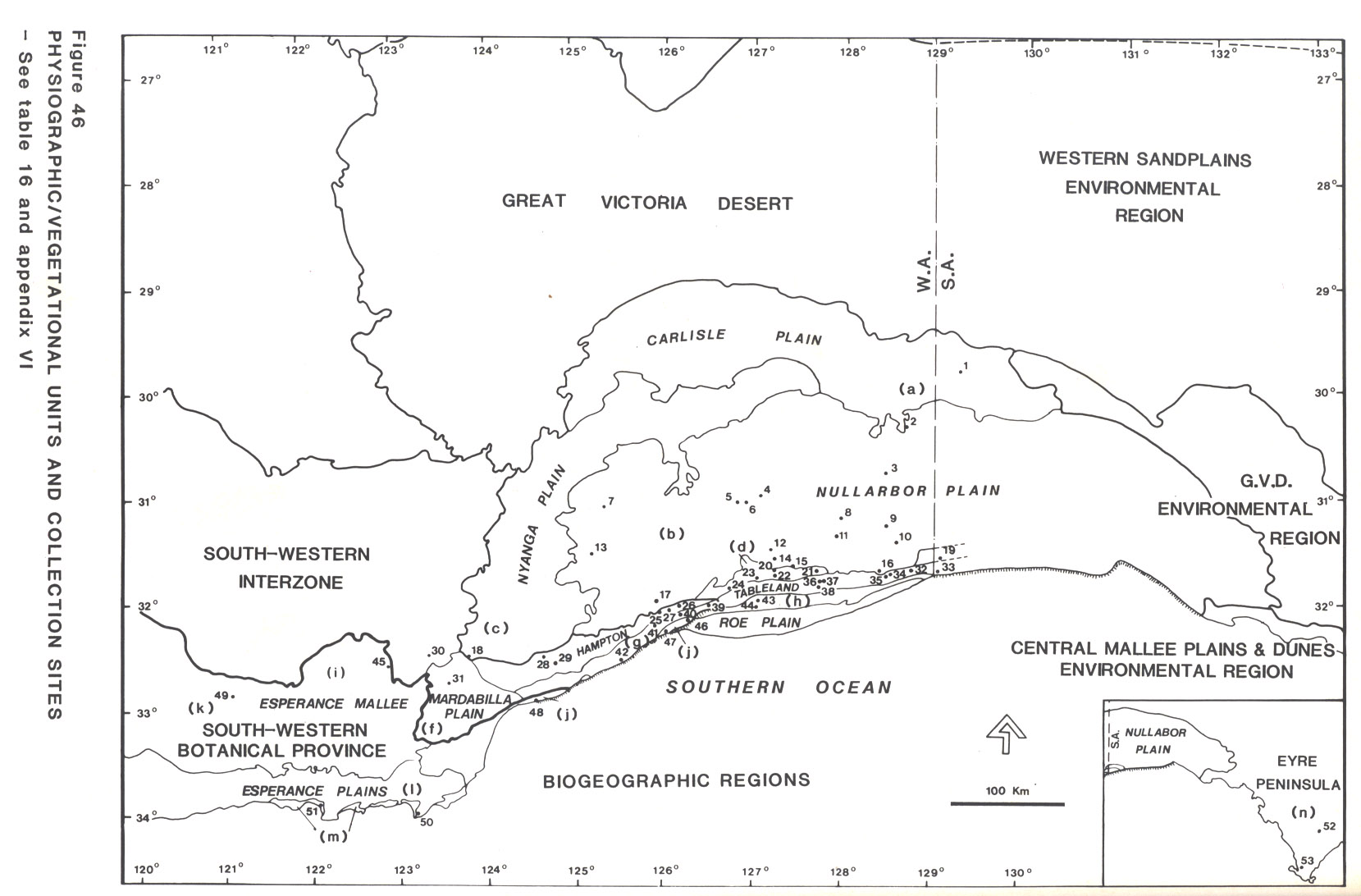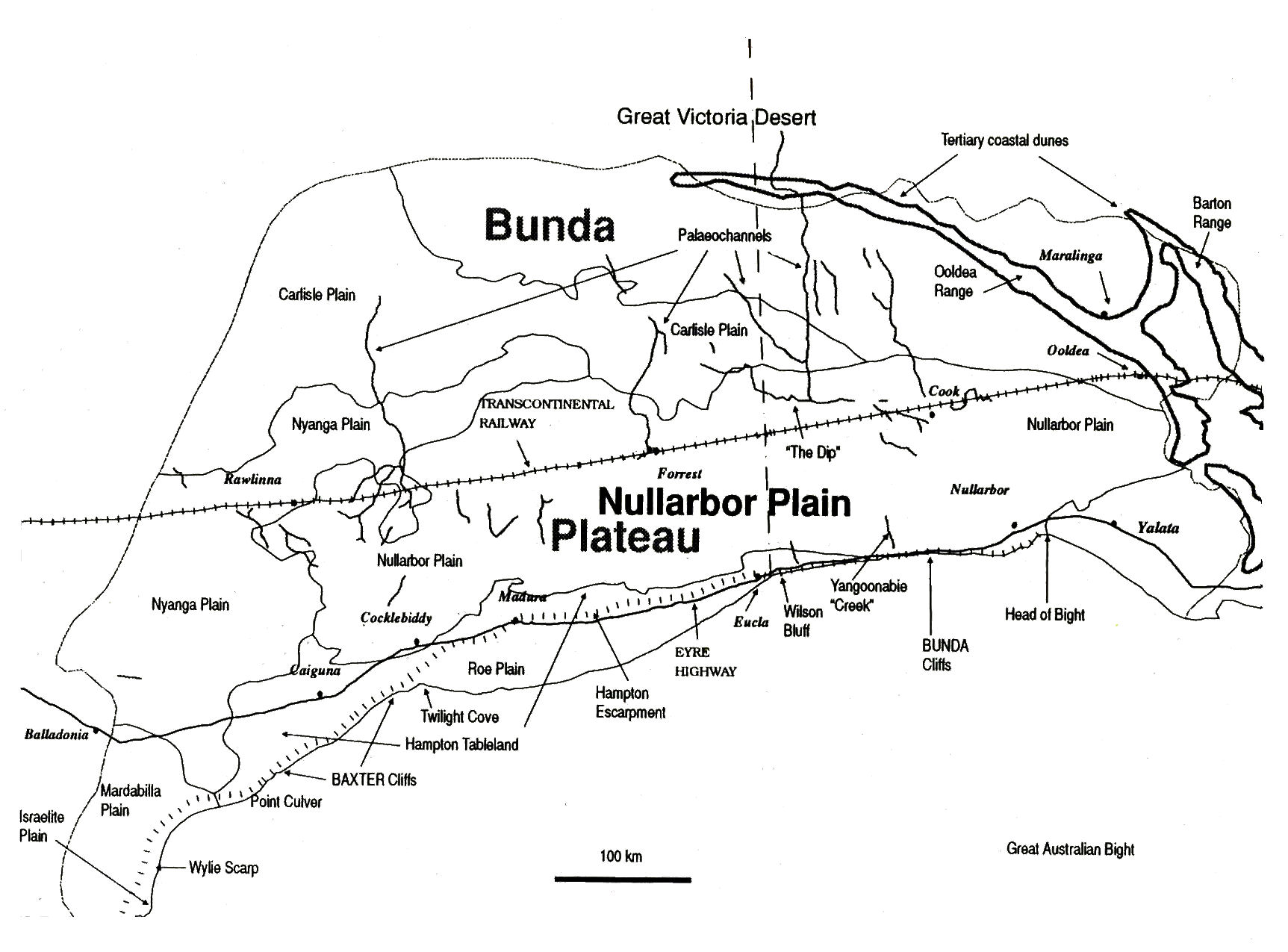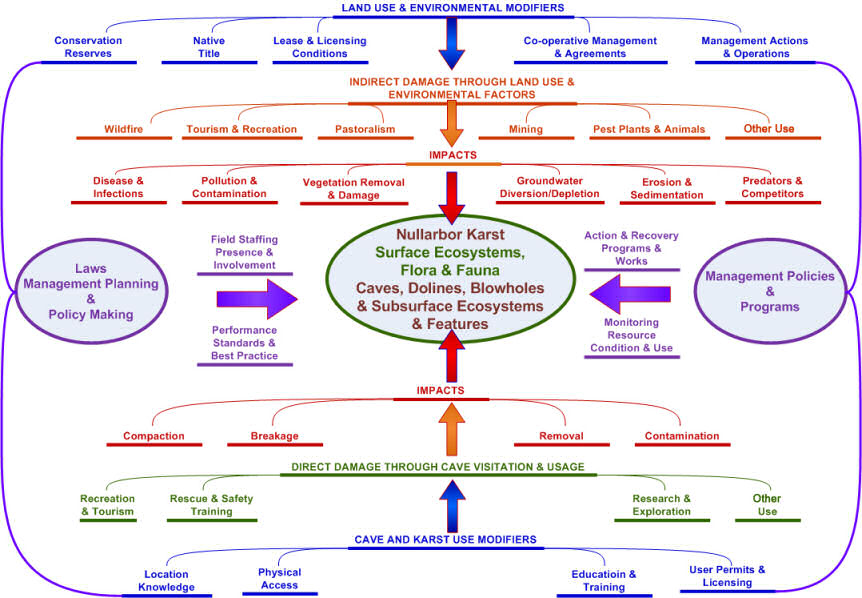INTERIM MANAGEMENT GUIDELINES FOR THE NULLARBOR CAVES AND SELECTED KARST FEATURES
Director, Geoscene International (A Division of Scenic Spectrums Pty Ltd)
Abstract
The Nullarbor Karst is the largest karst area in Australia (200,000 km2) and the largest contiguous karst formation in the world. The Nullarbor is globally unique due to its simple and youthful geologic history, its saline hydrology within a carbonate aquifer, its extensive crystal weathering. Karst processes are active and unlike other desert caves of the world, the Nullarbor underground is being hollowed out at observable rates. The Nullarbor is the only arid or semi-arid karst that has undergone a short period of sub-aerial weathering and limestone diagenesis, but has vast caves and limitless underground water. The arid nature of the Nullarbor Karst is highly significant in terms of the type and variety of speleothems and other karst features within the caves. The area may potentially have 50,000 karst features, including dongas, blowholes, rockholes, dolines and caves of various types with dry and unique underwater sections exist. However, only 3500 karst features have been examined and recorded. The area supports a wide range of “at risk” rare, endangered, vulnerable and/or endemic flora and fauna species on the ground surface areas. Within the soils, regolith and cave passages, a wide range fauna exist, including troglofauna, stygofauna, guanofauna, edaphobites, bat species and bird species. Some of these features are contained within existing conservation reserves, but many are located in off-reserve properties. Despite the Nullarbor’s world significance and being revered in Australian folklore and contemporary romantic images of the Australian Outback and wilderness, the complex geomorphological and hydrologic processes of the area are poorly understood. Recently prepared Interim Management Guidelines provide a framework for management of the area’s resources and various land use threats. However, dryness, remoteness and current economic barrenness seem to conspire against appropriate levels of protection, research and management of this karst area of world significance.
Article
Project Background and Objectives
The report “Interim Management Guidelines for the Nullarbor Caves and Selected Karst Features” (Geoscene International, 2009) was prepared for the Rangelands NRM Co-ordinating Group and the Western Australian Dept. of Environment & Conservation. It was funded as a “desktop study” through the Biodiversity Conservation Initiative – Save Our Species Program. The 12-month project was completed during March, 2009 with assistance from the Steering Committee, including:
- Department of Environment and Conservation, WA;
- Australian Government Natural Resource Management Team;
- Rangelands NRM Team;
- Department of Indigenous Affairs, WA;
- Goldfields Land and Sea Council;
- Western Australia Museum;
- Pastoralists;
- Speleologists, Cave Divers & Cave Researchers.
The principal objectives were to prepare Interim Management Guidelines (IMGs) for the caves, blowholes, dolines and key associated biological features of the Nullarbor Karst System. The primary audience consists of those management and stakeholder groups represented on the Steering Committee, as well as other Local and State Government bodies.
Although the study initially sought to cover the entire Nullarbor Plain area within Western Australia, however, was re-scoped to focus on the caves and selected karst features located primarily south of the Trans Australian Railway.
Land Tenure and Land Uses
Land tenure is shown in Figure 1 for the broader Nullarbor region within Western Australia. Pastoral grazing (primarily sheep) on Crown Lands (Pastoral Leasehold properties) dominates much of the area. Nuytsland Nature Reserve and Eucla National Park are located along the coast. The Great Victoria Desert and Plumridge Lakes Nature Reserves are located in the northern portion of the broader karst region. The Trans Australia Railway and the Princes Highway cut across the area from east to west. A number of mining leases or mining exploration leases exist in the area for the extraction of limestone, mineral sands, etc. Water bores are also licensed for the extraction of groundwater which usually has relatively high salinity levels. Tourism facilities are limited to the occasional roadhouses/motels along the highway and the Eyre Bird Observatory.

Figure 1 Land Tenure (Source: Adapted from Subterranean Ecology, 2007 p. 20 – Figure 4-4.)
Biogeographic Regions and Climate
The focus area includes four biogeographic regions as shown in Figure 2, each displaying distinctive characteristics or features as follows:
Nullarbor Plain
- flat, treeless plain;
- dongas;
- ridge & corridor terrain;
- south end of palaeochannels;
- scattered caves/karst features (solution pans, rockholes, collapse dolines & blowholes);
- Bluebush – Saltbush steppes;
- low Acacia woodlands over Bluebush.

Figure 2 Beard’s (1975) Biogeographic Regions (Source: Tille, 2006, Soil-landscapes of Western Australia’s Rangelands and Arid Interior)
Hampton Tableland
- south of Nullarbor plain;
- denudated limestone formation revealing underlying Abrakurrie limestone;
- most of the known caves and dolines;
- ridge & corridor terrain dominates;
- scattered Acacia &/or Mallee Eucalypts in Chenopod shrubland;
- karren restricted to coastal cliffs & former coastal escarpments adjacent to dolines & cave entrances;
- rounded pocketing and perforation of the limestone, which occurs by solution beneath the soil, has been exposed in many places by subsequent deflation;
- most important area of the region for the development of a range of surface and subsurface karst features;
- various mallee communities dominate the limestone scree slopes and pavements, as well as the sandy surfaces;
- alluvial and calcareous plains below the scarp support Eucalypt woodlands and Myall open low woodlands.
Roe Plain
- depositional surface formed on Pliocene to Pleistocene roe calcarenite;
- emerging sea floor with beach ridges & coastal dunes;
- active modern and older dune ridges;
- some caves with different style to those of Bunda Plateau;
- Eucalypt woodlands and Myall open low woodlands on alluvial and calcareous plains below the scarp.
Mardabilla Plain
- southwest portion of Bunda Plateau, south of Nyanga Plain;
- flat & soil covered with numerous inliers of basement rocks;
- shallow moats 3 – 10 m deep & 50 – 150 m across often ring basement rocks;
- Mallee and shrublands on sandplains associated with laterite uplands, playas and granite outcrops;
- diverse woodlands rich in endemic Eucalypts on low greenstone hills, valley alluvials and broad plains of calcareous earths.
Climatically Peter Tille’s (2006) Soil-landscapes of Western Australia’s Rangelands and Arid Interior follows Beard (1990) in describing the bioclimate of the Nullarbor soil-landscape province of the Central Southern soil-landscape region as “mainly Eremaean”. Much of the inland area commonly has 12 dry months a year, making it akin to a dessert. Mean rainfall is mostly 150-250 mm (dropping to 100 mm in the north) with no seasonal tendencies. The south of the province extends into a “Sub-Eremaen” bioclimate zone, a Mediterranean semi-desert with 9-11 dry months and rainfall rising to 300 mm on the Great Australian Bight. In the southwest (near Israelite Bay) the bioclimate tends toward “Thermoxeric”, extra dry to dry Mediterranean with 6-8 dry months and up to 400 mm of winter-dominant rainfall..
Significance and Key Values
The entire Nullarbor Karst System is of national and world significance. Aside from the main karst features noted above, the area supports a wide range of “at risk” rare, endangered, vulnerable and/or endemic flora and fauna species on ground surface areas. Within the soils, regolith and cave passages a wide range of fauna exist, including troglofauna, stygofauna, guanofauna, edaphobites, bat species and bird species.
A high degree of endemism exists for many of these species. The caves and dolines play a refugia role for many of the species. Many of the species are distinctive and highly diverse and representative examples of relictual subterranean fauna are found in the caves of Roe Plain and the Hampton Tableland.
The presence of microbial mantles are considered to be rare and recommended for high priority protection. Specially protected fauna (Schedule 1 of the Wildlife Conservation Notice 1998) considered rare or likely to become extinct as a result of identified threatening processes include Troglodiplura lowryi and Tartarus mullamullangensis and the Pannikin Plains Cave Isopod (Abebaioscia troglodytes Vandel). Other localised troglobitic species include Tartarus nurinensis and Speothalpius grayi, Speozuphium poulteri, among others.
The caves of the Nullarbor also offer significant palaeontological resources providing evidence of megafauna (e.g., marsupial lion, short-faced kangaroos, giant wombat, etc.) and the presence of the Thylocene (Tasmanian Tiger) on mainland Australia.
Aside from the values directly associated with the karst features, a range of other highly significant values exist under the areas of:
- paleoenvironmental evidence and history;
- archaeological features;
- surface ecosystems, flora and fauna;
- cultural heritage places, sites and features (Indigenous and non-Indigenous);
- natural heritage places, sites and features;
- scenic resources;
- tourism, recreation and wilderness features, facilities, activities and values;
- Indigenous tourism ventures; and
- scientific research and education.
Culturally, the Nullarbor Karst System has been home to Aboriginal groups for tens of thousands of years. The area is significant for its anthropological values and for its archaeological values with some evidence of Aboriginal cave paintings and rockhole modifications. Historically, the area is important to Indigenous Australians and non-Indigenous Australians alike. The Nullarbor karst supports some large pastoral leasehold properties that are iconic representations of life on the Australian Outback.
Some of the above geologic, flora and fauna areas are contained within existing conservation reserves, but many are located in off-reserve properties.
The report provides a detailed summation of the full range of natural, cultural and scientific values of the area.
Framing the Guidelines
What is Karst?
In framing the IMGs, it was important to establish a common understanding of karst processes, characteristics and implications, as many people are not familiar with the term “karst” or have a limited understanding of it being associated primarily with limestone geology. Here, we have used the following definition offered by Watson et al. (Eds., 1997) in the IUCN publication, Guidelines for Cave and Karst Protection:
“ The term karst denotes a distinctive style of terrain which is characterised by individual landform types and landscapes that in large measure are the product of rock material having been dissolved by natural waters to a greater degree than is the norm in most landscapes. In a narrow sense, the word refers to any area which has been shaped by solution processes. More broadly, it is an integrated, yet dynamic system of landforms, life, energy, water, gases, soils and bedrock. Perturbation of any one of these will impact upon the rest of the system….Caves and other typical karst features may also result from other processes, and give rise to the phenomenon known as pseudokarst – land systems which contain karst-like features such as caves and surface collapses which are not formed by solution”.
Key Focus Attributes and Assets Addressed
The key attributes and assets addressed in the study include:
- caves and interior cave features;
- blowholes; collapse dolines, and;
- key subterranean ecosystems, flora and fauna associated with the above features.
The discovery of these features has increased steadily over the years, as illustrated in the comparison between Figure 3 and Figure 4. Currently, the Karst Index Database – South Australia (KIDSA) have recorded just over 3500 karst features, including 684 caves, 1,169 blowholes, 926 dolines, 533 rockholes and rock shelters, and 255 other karst features. Subterranean Ecology (2007) estimated that only 7% of the total potential caves have been recorded to date. It is estimated that over 50,000 caves and karst features are likely to exist in the Nullarbor region.
Closely associated attributes and assets include:
- geology, landforms and soils;
- catchments and karst sub-catchments;
- karst aquifers and groundwater quality;
- native plants and plant communities;
- ecological communities;
- native fauna (terrestrial and subterranean);
- indigenous heritage;
- non-indigenous heritage; and
- other human values.
Potential Uses Considered
Potential land uses addressed by the IMGs include:
- tourism and visitor activities;
- indigenous and cultural activities;
- pastoral activities;
- mining activities;
- cave rescue and emergency services training;
- water extraction; and
- research.
Key Management Issues
Given the combination of high environmental and cultural values and the mix of land tenure and management vestings there are a very wide range of management issues. Figure 5 provides an overview of this range of issues.
In reviewing these issues, it is useful to recognise that the purpose of this report is to prepare Interim Management Guidelines for implementation over the next five years in order that essential field operations and management decisions can be carried out while a full management plan is in waiting. In addition, the focus is on the protection and management of the caves, dolines and blowholes and their immediate surrounds.

Figure 3 Cave and Karst Features Known During 1982 (Source: Davey et al., 1992, Figure 2 – Physiography of the Nullarbor region: after D.C. Lowry 1970, Lowry & Jennings 1974 and Benbow 1990)

Figure 4 Cave and Karst Features Known During 2007 (Source: Subterranean Ecology, 2007 – Figure 4.3, p. 18)

Figure 5 Overview of Management Issues Regarding the Nullarbor Caves, Dolines, Blowholes and Associated Karst Features (Source: Geoscene International, 2009. Copyright, Scenic Spectrums Pty Ltd, 2009.)
The report takes a significant step towards some form of agreed, united on-ground management by a number of key stakeholders around the cave and karst areas that we believe are currently under potential existing threat. Maintenance and protection of the caves, dolines and blowholes (and where necessary recovery or rehabilitation), along with the associated surface ecosystems, flora and fauna are the central focus of the guidelines. Minimisation and protection of the resources from either direct or indirect damage by cave visitation and usage (for recreational or research purposes) or by land use activities and other environmental factors should be the primary objective.
Addressing all of the various issues raised by the flow chart in Figure 5 would certainly require a full management plan. For the purposes of the IMGs, the following are the key issue areas have been addressed:
- the use of caves and potential impacts on caves associated with:
- recreation & tourism uses;
- research & exploration uses; and
- rescue & safety training uses;
- ecosystem, flora and fauna issues;
- pastoral uses and potential impacts on caves;
- mining uses and potential impacts on caves;
- transport and communications infrastructure and associated impacts on caves;
- issues related to indigenous cultural heritage and aboriginal recognition and co-operation;
- fire control and management;
- safety and liability issues; and
- consideration of enhanced management frameworks.
Several other uses with potential impacts are relatively well-addressed by existing regulations, guidelines and practices, including:
- Indigenous use, including protocols for co-operative Aboriginal access and management under current land tenure arrangements. (Until current Native Title claims are resolved, it is difficult to add to the guidelines and agreed arrangements already in place.);
- Wildfire or bushfire regulations and response guidelines;
- Pest plant and animal controls, along with protective measures for flora and fauna species declared under the EPBC Act, the Conservation and Land Management Act 1984 or the Wildlife Conservation Act 1950;
- Road and railway construction;
- Pastoral and mining uses. However, specific aspects of these should be reviewed in light of the focus issues of this report and recent adjustments to tenure and reserve allocations. The issues addressed will consider options regarding the range of land use and impact modifiers noted in Figure 5, including the application where appropriate of: Conservation Reserves; co-operative management and agreements; lease and licensing conditions, and management actions and operations.
Principal Findings, Recommendations and Conclusions
Principal Findings
The findings of the report are too extensive to completely summarise in this paper. However, the principal findings of essential importance include:
- the Nullarbor caves and associated features play a critical role in a much larger karst system that is without question of world and national significance for a range of natural and cultural resources (e.g. geologic, palaeontological, archeological, biological etc. and in terms of indigenous and non-indigenous cultural heritage);
- the area receives relatively low visitor numbers due to remoteness, but is extremely fragile and vulnerable, even to the level of use currently received;
- management co-ordination, presence, activity and control over the caves and karst features is inadequate given the high conservation values and vulnerability of the area;
- the current Cave Access Permit System is inconsistently applied and unenforceable, primarily due to a lack of public knowledge/co-operation and no field checks on usage;
- there are significant public safety and liability issues;
- there are many untapped opportunities for presentation and interpretation of the outstanding features of the area to the public and for enhanced conservation measures and research.
Priority Guidelines
Twenty-four Interim Management Guidelines have been recommended, covering a full range of Nullarbor values and issues. The key IMG recommendations are summarised as follows:
- review and consideration of alternatives for field-based conservation officers, either as trained volunteers, paid staff or some combination, including incentives for assistance from pastoral leaseholders;
- application of the Cave Management Classification System to determine which caves should be managed as Tourist Caves, Adventure Caves or Restricted Access Caves with more consistent and rigorous application of the Cave Access Permit System (maintaining positive relations with and involvement of Pastoralists and appropriate Aboriginal communities or Traditional Owners);
- conduct assessments of cave risks to visitors for selected caves on a priority basis;
- consider vesting the overall management of all caves and associated karst features to a single State Government department (e.g. DEC) with oversight from a Nullarbor Cave and Karst Management Advisory Committee representing other key government departments and stakeholders;
- consider fencing, gating and locking critically significant and fragile caves, dolines and blowholes where practical (along with new cave reserves set aside in the recent 2015 Pastoral Lease agreements with pastoralists);
- continue priority ecosystem, flora and fauna protection and recovery programs and weed and pest animal controls on a targeted basis;
- survey and fence ground-surface footprints of significant cave passages on pastoral leasehold properties and Unallocated Crown Lands for safety and conservation purposes;
- provide visitor information, safety and interpretive facilities and programs on a selected and priority basis as indicated by feasibility assessments and specified works plans;
- consider enhancement of management frameworks and improved co-ordination of key management agencies and stakeholders;
- involve Traditional Owners in future ownership and management initiatives.
Summary Conclusions
In summary, the following concluding comments regarding the report and guidelines are made:
- Although the first four priority guidelines (field staff, cave classification, risk assessment & single agency) are broader policy and administrative concerns, they greatly influence the capability to implement effective and efficient field operations during the interim period of the next five years;
- There is potential for funding under periodic Federal Government grant programs (e.g., Caring for Our Country). Other significant resource assessment, planning and research projects have been identified;
- A preliminary review of potential protected area management frameworks that might be suitable for the future conservation of the Nullarbor’s natural and cultural estate is encouraged;
- The information collected on the significant values and management issues of the Nullarbor caves and associated karst features should be shared with the community, key stakeholders and government land managers;
- Further review, comment and suggestions from the key stakeholders and the general public should be sought;
- The IMG report and the continuing dialogue will provide a short-term sense of direction as we look ahead.
References
Beard, J.S., (1975). The Vegetation of the Nullarbor Area: Vegetation Survey of Western Australia, 1: 1,000,000 Vegetation Series, Explanatory Notes to Sheet 4, Nullarbor. University of Western Australia Press, Perth.
Beard, J.S., (1990). Plant Life of Western Austrailia. Kangaroo Press Pty Ltd., Kenthurst, NSW.
Benbow, (1990). Tertiary coastal dunes of the Eucla Basin, Australia. Geomorphology 3: 9-29.
>Davey, A.G.; Gray M.R.; Grimes, K.G.; Hamilton-Smith, E.; James, J.M.; and Spate, A.P, (1992). World Heritage Significance of Karst and Other Landforms in the Nullarbor Region. Applied Ecology Research Group, Faculty of Applied Science, University of Canberra. A report to the Commonwealth Department of The Arts, Sport, The Environment & Territories.
Devine, Paul, (2007). The Karst Features of the SW Nullarbor – Mardabilla Plain & Adjacent Localities. Publisher Not Stated.
Geoscene International, (2009). Interim Management Guidelines for the Nullarbor Caves and Selected Karst Features. Dennis Williamson, principal author. Prepared for the Rangelands NRM Co-ordinating Group and the Western Australian Department of Environment and Conservation.
Lowry, D.C., (1970). Geology of the Western Australian Part of the Eucla Basin. W. Aust., Geol. Surv., Bull. 122 [201pp, map].
Lowry, D.C. and Jennings, J.N., (1974). The Nullarbor karst Australia. Zeist. Geomorph. NF 18(1): 36-81.
Subterranean Ecology, Scientific Environmental Services, August 2007. Subterranean Biodiversity of the Nullarbor Karst Desktop Study. Dr Stefan Eberhard and Dr Timothy Moulds, Principal Authors. Prepared for the Department of Environment and Conservation, Western Australia.
Tille, Peter, (2006). Soil-landscapes of Western Australia’s Rangelands and Arid Interior. Resource Management Technical Report 313. Department of Agriculture and Food, Government of Western Australia. ISSN 1039-7205.
Watson, John; Hamilton-Smith, Elery; Gillieson, David; Kiernan, Kevin, Eds., (1997). Guidelines for Cave and Karst Protection. Prepared for the World Commission on Protected Areas (WCPA) Working Group on Cave and Karst Protection, IUCN – The World Conservation Union.